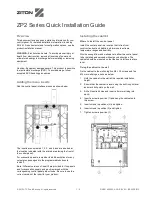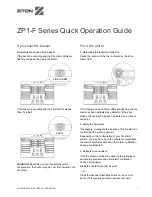
Page 20 of 27
12 Appendix
12.1 Fire Testing at BRE
In one of the most comprehensive test suites ever run on a mist product at the Building Research
Establishment (BRE), Plumis verified the effectiveness of Automist with live burns in a series of different
scenarios. The test was based on BS EN 1869:1997, DD 8458 1:2010, and the criteria of Scandinavian
SRSA/DSB “Easily installed automatic extinguishing systems”. Critically, Fractional Effective Dosage (FED)
measurements and “free burn” control tests were included to allow a complete and objective assessment.
These tests were run in BRE Global’s Watford (UK) Burn Hall and mimicked both furniture and kitchen
fires.
What is Fractional Effective Dosage?
Fractional Effective Dosage (FED) is a calculation method used to predict impacts on fire victims as a result
of the “doses” of toxic gases concentration and the temperature exposure during a fire. This is detailed by
the method of Prof D.A. Purser and is used to British and European Standards (BS7899-2: 1999: Code of
practice for assessment of hazard to life and health from fire. Guidance on methods for the quantification of
hazards to life and health and estimation of time to incapacitation and death in fires and ISO TS 13571: Life-
threatening components of fire – Guidelines for the estimation of time available for escape using fire data,
respectively).
FED has a toxic gas component (FED-Asphyxia) and a temperature component (FED-Heat).
FED Asphyxia: Exposure to a sufficient inhaled dose of asphyxiant gases results in cerebral hypoxia
(insufficient oxygen available to brain tissue), which leads to collapse with loss of consciousness followed
by death if the exposure is prolonged. The inhaled dose of asphyxiant gases increases with fire duration
and with the increased concentration of toxic gases with fire growth. Consequently, the main objective
from a fire protection perspective is to minimize fire spread (reducing the concentration rate of increase)
sufficiently to avoid loss of consciousness but most importantly death before rescue arrives. In the BRE
tests, the toxic gases considered were carbon monoxide and carbon dioxide, as well as low-oxygen hypoxia.
The dosage of toxic gases is also dependent on rate of air intake. For these tests, it has been assumed that an
occupant was stationary but agitated while in the compartment during a fire, resulting in ventilation (VE)
of 15 litres per minute. Using this method, loss of consciousness is expected when the FED of asphyxiant
gases (FEDAG) reaches 1 while death is expected at an FEDAG of approximately 2-3.
FED Heat: The main hazards from a brief exposure to heat during a fire are skin pain and burns, followed
by death in severe situations. This depends mainly on the duration of exposure and the temperature
increase during a fire so suppression will not only reduce the temperature but also avoid it from increasing.
When FED Heat reaches 1 it is assumed that an occupant will be incapacitated due to pain. Third degree
burns are predicted at an FED of approximately 3. Additionally, for air saturated with water vapour (as in a
water mist fought fire), the maximum temperature at which air can be breathed is 60°C.


























